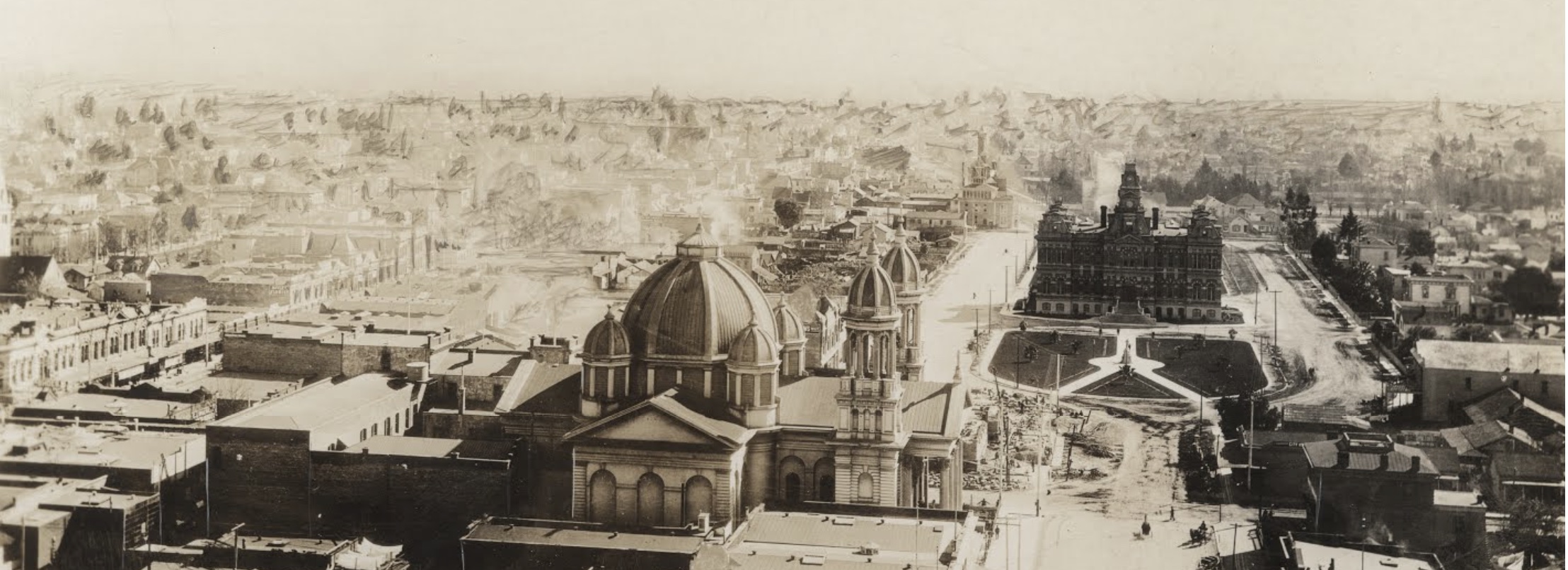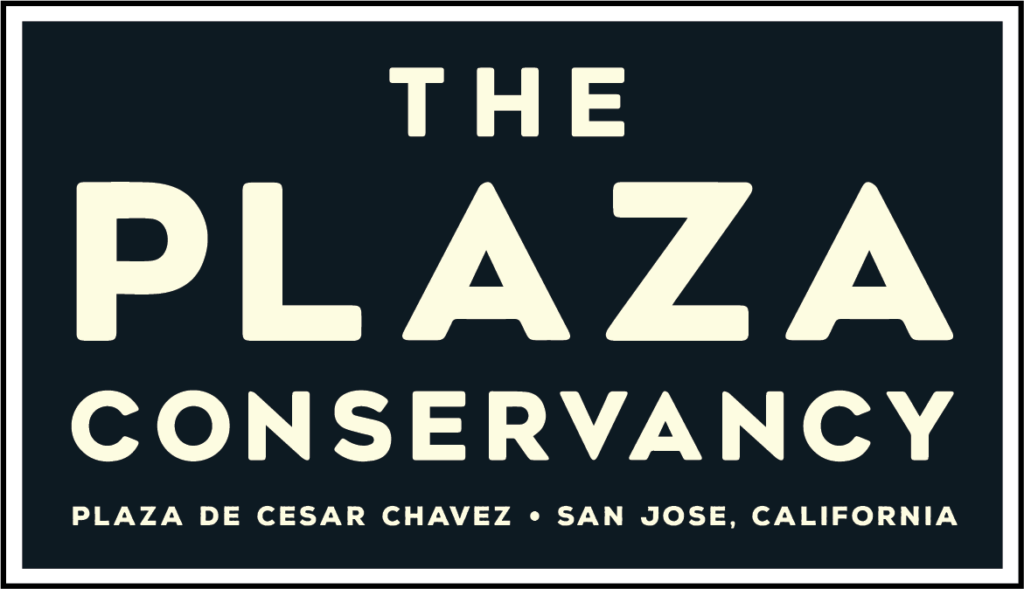HISTORY
Plaza de Cesar Chavez dates back to 1797 as the plaza mayor of the Spanish Pueblo de San José de Guadalupe, making it the oldest public space in Northern California. It was the heart of the pueblo during the Spanish and Mexican periods and has remained a focal point of the City of San Jose for more than 200 years. The plaza was renamed in honor of California civil rights activist Cesar Chavez in 1993. The Plaza de Cesar Chavez is one of San Jose’s primary civic spaces and the historic center of Downtown San Jose.
It is bounded by San Jose institutions and landmarks, including The Tech Interactive, the San Jose Museum of Art, City National Civic, St Joseph’s Cathedral, the Signia Hotel, the Montgomery Theater and the Circle of Palms Plaza. The park was renovated in the 1980s by the San Jose Redevelopment Agency and the city’s parks department. A small stage was built and weekly summer concerts were produced by the San Jose Downtown Association. The park is also home to the annual Christmas in the Park winter event. In 1994, Robert Graham’s Quetzalcoatl serpent sculpture was unveiled at the south end of Plaza de Cesar Chavez.
A new wave of development has begun to transform the area around Plaza de Cesar Chavez. Jay Paul Co.’s 200 Park project is a 19-story office highrise completed in 2023, and its CityView Plaza redevelopment is envisioned as a large office complex running the western length of the park.
The one-block stretch of Park Avenue that runs from Almaden Boulevard to Plaza de Cesar Chavez will be home to eight new office towers if the ambitious plans are realized, and Park Avenue would become a curbless “garden street” with equal amounts of greenery and pavement.
The Bay Area Rapid Transit (BART) system’s planned extension to downtown San Jose will include a grand transit station just a few blocks away from the park. When combined with Valley Transportation Agency’s light rail system of 40 stations, with two of them located a block away, the park will become one of the most accessible public parks in the Bay Area, with direct connections to downtown San Francisco and Oakland.

